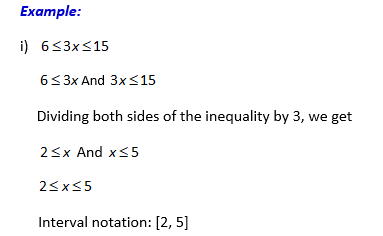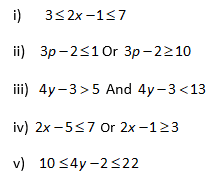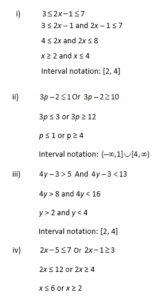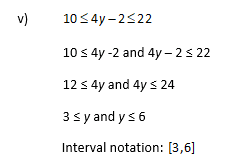Compound Inequalities
A compound inequality is an equation with two or more inequalities joined together with either “and” or “or”. For example: x ≤ -3 or x ≥ 2; x ≥ -7 and x ≤ 7


ii) 2(y-1) < 6 Or 2(y-1) > 10
These inequalities are connected with < or > symbol, so the solution will be the union of solutions of these two inequalities.
Dividing both sides by 2,
(y-1) < 3 or (y-1) > 5
Adding 1 to both sides of the inequality, we get
y<4 Or y>6
Interval notation: ![]()
Check Point
Solve the given compound inequalities and write the answer in interval notation:

Answer Key

There is no overlap between the two inequalities, hence there is no solution to the compound inequality.

IN THE NEWS

Our mission is to provide high quality online tutoring services, using state of the art Internet technology, to school students worldwide.
Online test prep and practice
SCAT
SSAT
ISEE
PSAT
SAT
ACT
AP Exam
Science Tutoring
Physics Tutoring
Chemistry Tutoring
Biology Tutoring
Math Tutoring
Pre-Algebra Tutoring
Algebra Tutoring
Pre Calculus Tutoring
Calculus Tutoring
Geometry Tutoring
Trigonometry Tutoring
Statistics Tutoring
Quick links
Free Worksheets
Fact sheet
Sales Partner Opportunities
Parents
Passive Fundraising
Virtual Fundraising
Our Expert Tutors
Safe and Secure Tutoring
Interactive Online Tutoring
After School Tutoring
Elementary School Tutoring
Middle School Tutoring
High School Tutoring
Home Work Help
Math Tutors New York City
Press
©2022 eTutorWorld Terms of use Privacy Policy Site by Little Red Bird
©2022 eTutorWorld
Terms of use
Privacy Policy
Site by Little Red Bird






